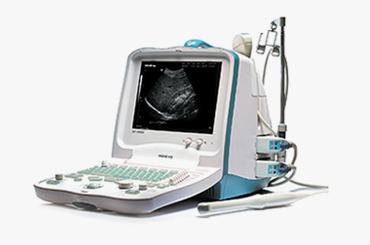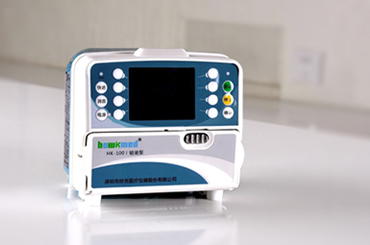Lead Battery Type English Name Complete
APR 10, 2024 Pageview:1640
In the realm of energy storage, lead-acid batteries have been a cornerstone technology for over a century. Despite the emergence of newer battery chemistries, lead-acid batteries continue to hold significant relevance due to their reliability, cost-effectiveness, and well-understood characteristics. This article aims to delve into the various types of lead-acid batteries and explore their wide-ranging applications.
Lead Battery Type
Lead-acid batteries, a cornerstone of energy storage technology, come in diverse variations, each engineered to fulfill specific requirements. Understanding the nuances of these lead battery types is crucial for selecting the most suitable option for various applications. Let's delve deeper into the intricacies of lead battery classifications:
Flooded Lead-Acid Batteries
Flooded lead-acid batteries, also known as wet cell batteries, represent the traditional form of lead-acid technology. Comprising lead plates immersed in a bath of sulfuric acid and water electrolyte solution, these batteries have been the workhorse of energy storage for decades. The flooded design facilitates efficient charge transfer and robust power delivery. However, they necessitate regular maintenance to replenish water lost due to electrolysis, making them better suited for applications where periodic maintenance is feasible. While flooded batteries offer cost-effective solutions and high power output, proper ventilation is essential to mitigate the risk of hydrogen gas accumulation.
Valve-Regulated Lead-Acid (VRLA) Batteries
Valve-regulated lead-acid (VRLA) batteries represent a significant advancement in lead-acid battery technology. These batteries are sealed units that utilize innovative mechanisms to regulate internal gases, eliminating the need for maintenance and enhancing safety. VRLA batteries are further subdivided into two main categories:
Absorbent Glass Mat (AGM) Batteries: AGM batteries feature a fiberglass mat separator that absorbs the electrolyte, immobilizing it within the battery's structure. This design prevents spillage and enables a maintenance-free operation, making AGM batteries ideal for applications where accessibility is limited or periodic maintenance is impractical. AGM batteries excel in delivering high power density, making them suitable for starting vehicles, powering emergency backup systems, and supporting critical applications where rapid discharge is essential.
?Gel Batteries: Gel batteries employ a silica-based gel electrolyte, which immobilizes the electrolyte and enhances vibration resistance. The gel electrolyte ensures uniform distribution and minimizes the risk of acid stratification, leading to extended battery life and improved performance. Gel batteries are renowned for their deep-cycle capabilities, making them ideal for renewable energy storage, electric vehicles, and off-grid power systems. Their robust construction and ability to withstand frequent deep discharges make gel batteries a reliable choice for demanding applications requiring sustained energy delivery over extended periods.
Understanding the distinctions between flooded lead-acid batteries and VRLA batteries, including AGM and gel variants, enables informed decision-making when selecting the most appropriate lead battery type for specific applications. Whether it's providing starting power for vehicles, ensuring uninterrupted backup power for critical infrastructure, or storing renewable energy for sustainable electricity generation, lead-acid batteries continue to play a pivotal role in powering the world's diverse energy needs.
Lead Battery Application
The versatility and reliability of lead-acid batteries make them indispensable across a myriad of industries and applications. Understanding the diverse applications of lead batteries underscores their significance in providing reliable power solutions for various sectors. Let's explore the wide-ranging applications where lead-acid batteries excel:
Automotive Industry
Lead-acid batteries serve as the backbone of automotive power systems, providing the necessary energy to start engines, power lighting systems, and operate essential accessories. From passenger cars to commercial vehicles and motorcycles, lead-acid batteries deliver robust cranking power to initiate combustion engines, ensuring reliable performance even in extreme weather conditions. Their affordability, high power output, and widespread availability make lead-acid batteries the preferred choice for automotive applications worldwide.
Telecommunications
In telecommunications infrastructure, lead-acid batteries play a critical role in ensuring uninterrupted connectivity. Valued for their reliability and long-lasting performance, lead-acid batteries, particularly valve-regulated lead-acid (VRLA) types such as AGM batteries, serve as backup power sources for cell towers, data centers, telephone exchanges, and other critical communication networks. These batteries provide seamless power supply during grid outages, enabling continuous operation of essential communication services and safeguarding against service disruptions.
Renewable energy storage
Lead-acid batteries are instrumental in storing energy generated from renewable sources such as solar and wind power. As the demand for sustainable energy solutions continues to rise, lead-acid batteries serve as reliable storage mediums for capturing and storing excess energy for later use. Whether deployed in off-grid residential solar systems, grid-tied commercial installations, or remote renewable energy projects, lead-acid batteries facilitate the efficient utilization of renewable energy resources, promoting energy independence and reducing reliance on fossil fuels.
Industrial Applications
Across various industrial sectors, lead-acid batteries find diverse applications due to their robustness and versatility. In material handling operations, lead-acid batteries power electric forklifts, pallet jacks, and other industrial vehicles, providing efficient and emissions-free mobility in warehouses, distribution centers, and manufacturing facilities. Additionally, lead-acid batteries serve as reliable backup power sources in uninterruptible power supplies (UPS), emergency lighting systems, and critical processes where uninterrupted power supply is imperative for safety and operational continuity.
Recreational and Marine
Lead-acid batteries are extensively used in recreational vehicles (RVs), boats, and marine vessels to power onboard electronics, lighting, and auxiliary equipment. Deep-cycle lead-acid batteries are particularly well-suited for marine applications, providing sustained power for extended periods while withstanding the rigors of marine environments. Whether navigating the open waters or enjoying outdoor adventures, lead-acid batteries enable reliable and efficient power supply for recreational pursuits.
From automotive to telecommunications, renewable energy storage to industrial applications, and recreational use to marine ventures, lead-acid batteries continue to demonstrate their versatility and reliability in powering a diverse array of applications. As technology advances and energy demands evolve, lead-acid batteries remain steadfast as a trusted energy storage solution, contributing to the resilience and sustainability of modern society.
Conclusion
Lead-acid batteries, available in various types including flooded and VRLA batteries, continue to be indispensable energy storage solutions across numerous sectors. From automotive to telecommunications and renewable energy storage, the versatility and reliability of lead-acid batteries make them a preferred choice for powering a wide array of applications. As technology evolves, lead-acid batteries are expected to remain relevant while adapting to meet the changing demands of modern energy storage needs.
- Prev Article: The Usage Method of Constant Current (CC)
- Next Article: Dry Battery Type English Name Complete
Leave Message
Hottest Categories
-
Hottest Industry News
-
Latest Industry News










